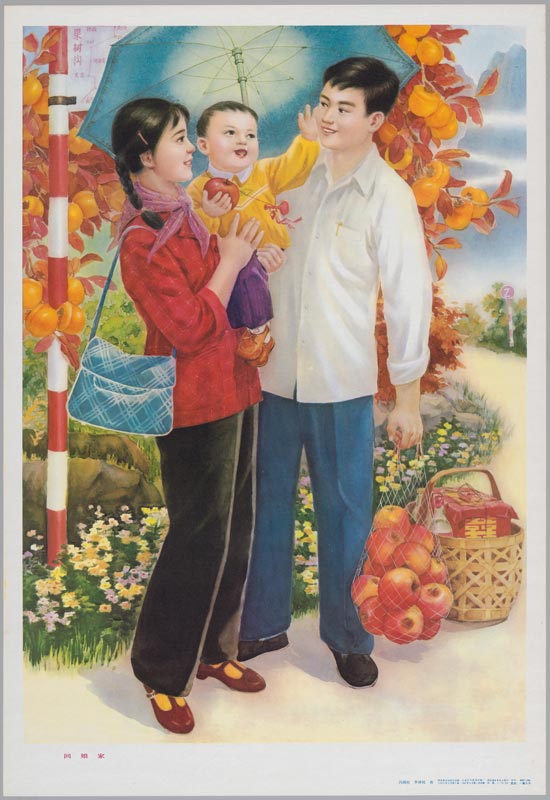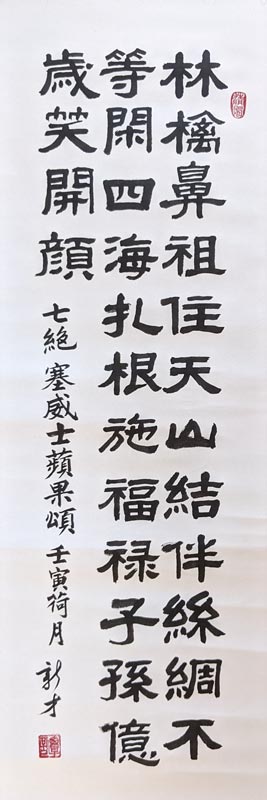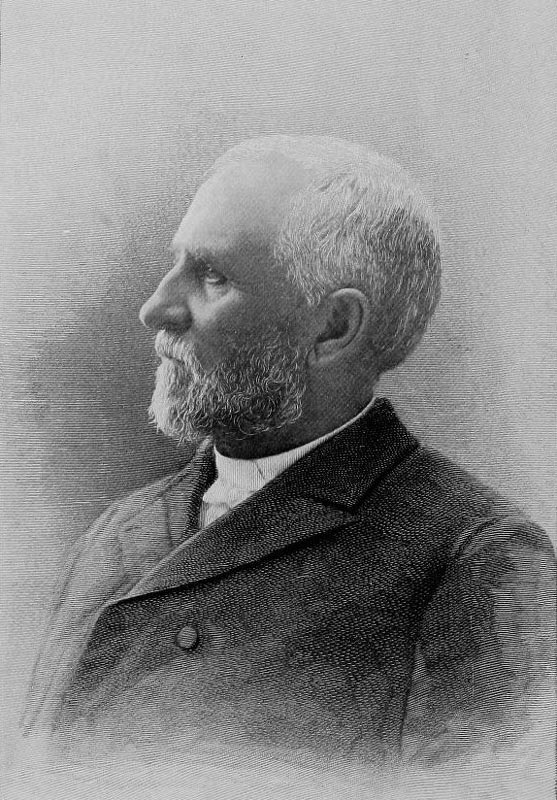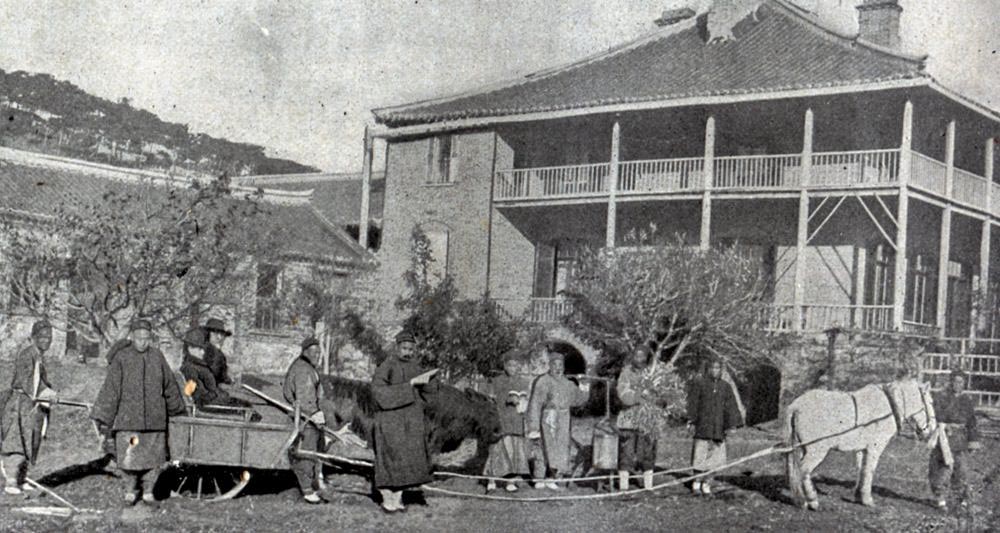Bringing The Apple Home
Dr John Livingston Nevius was a pioneer American Presbyterian missionary who reintroduced the apple to China
Trade routes between the east and west existed long before silk became fashionable in the Roman Empire and gave the routes their popular name, The Silk Road. Malus sieversii apples, plucked from the fruit-forested slopes of the Tian Shan, accompanied traders and their horses as they made their way westwards.
The apple pips that went with them spread the domestic apple from its origins in the mountains of Kazakhstan and its neighbours. It travelled through successive empires – in the orchards of the Sumerians, Babylonians, Greeks, and Romans.
The French and British took apples to North America, followed by waves of successive immigrants.
In this way, through trade, colonisation, and migration, apple orchards grew in a band of latitude across the northern hemisphere.
Over time, Malus sieversii picked up favourable traits through hybridisation with wild apples, especially Malus sylvestris in Europe, and people selected the best apples for their taste or use. Research has shown for example that astringent cider apples are genetically little different from sweet dessert apples, suggesting they have been chosen by makers of cider over the ages from a rich pool of natural diversity and conserved through grafting.
Of course, traders travelled in both directions on the Silk Road. That the apple travelled westwards on this journey of self-improvement rather than east into China is explained by Professor Barrie Juniper by the plethora of fruits already available in China, including a rich crop of wild apples. There was less need for travellers to covet apples and carry the fruit with them. Until the late nineteenth century, therefore, despite being where the apple originally emerged from the rose, apples growing in China were lacklustre and not particularly appreciated.
In 1871, Rev John Livingston Nevius (1829-1893) and his wife Helen moved to Yantai (then called Chefoo) in China’s Shandong province to continue their Christian mission in China. Shandong is the peninsular on China’s Pacific coast that was the birthplace of Confucius.
It took an American Presbyterian missionary to fasten the belt of apple orchards around the globe.
On 4th September 1872, Nevius reports the completion of the house he had built in Yantai called ‘Nan-Lou’. He realised that the latitude of Shandong would make it ideal for growing fruit and yet found that the existing fruit was poor. Through centuries of selection and breeding on their travel around the world, western apples had superior shape, taste, colour, and storability compared to the native Chinese apples.
He therefore bought three acres of land close by, which he called the South Garden, where local people could help him grow American and European apple varieties, along with other fruit.
“He sent to different parts of the United States and of Europe for varieties likely to suit the soil and climate, and gave no little thought to his experiment.”
Helen Nevius
In doing so, he completed the domestic apple’s slow westward circumnavigation around the world – along the Silk Road, traversing America, and across the Pacific back to China.
Much work was needed to improve the stony ground of the South Garden and there were many early disappointments, with fruit saplings dying on the long voyage from America, or failing to grow due to extremes of weather in Shandong, but he persevered. Nevius is credited with bringing thirteen apple varieties to China including Gravenstein, Yellow Bellflower, and Roxbury Russet.
“In Chefoo he planted not only a church, but a fruit garden. To the Chinese eye this garden was a striking symbol of what his gospel proposed to effect for the people.”
Martin, the Awakening of China 1907
The South Garden slowly became a success, and three houses were built for orchard workers. Scions and grafts were distributed freely to local people and the superior Western fruit began to command premium prices at market.
As a result, Western apples spread in China quickly.
In part, bringing apples from the USA to China was a response to China’s Great Famine of 1876-79, when it is estimated that in three years some ten million people died of starvation or related illness. Nevius actively helped relief work for the starving population in Shandong and, having been brought up in apple country of New York State, saw apples as an important source of nutrition. His imported fruit may also account for his strong constitution and stamina according to Dr Scott Sunquist.
Horticultural metaphors play throughout Nevius’ religious writing, such as in The Planting and Development of Missionary Churches (1899). He advocated planting churches from the ground up, growing self-reliant congregations led by local ministers trained by the missionaries, and taking account of local traditions and beliefs including Confucianism. His aim was to set the conditions for a self-propagating church.
“Christianity has been introduced into the world as a plant which will thrive best confronting and contending with all the forces of its environment; not as a feeble exotic which can only live when nursed and sheltered.”
John Nevius
A missionary for forty years in a country that was only beginning to open up to foreigners, Nevius made long two- to three-month preaching tours of the countryside, often borne on a barrow.
His trips are described by Creegan: “Two good barrow men, with one to help pull, could, on a good road, take the load of four hundred pounds forty miles between sunrise and darkness. Wonderful was their muscular power and endurance, for they would often travel five miles before resting, and over roads rough and hilly they would travel faster than a horse could walk.” Encountering suspicion and threats, he travelled thousands of miles, baptising converts and tending the fledgling Christian churches.
“We may also hope and pray that in the crowd which gathers around us as we pass from village to village, there may be some person prepared to receive our message, or that the good seed may find a permanent lodgment in some heart and bring forth fruit hereafter.”
John Nevius
One of Nevius’ ‘wheel-barrow men’ went on to oversee operations in the South Garden.
Helen Nevius wrote, “My husband’s introduction of foreign fruit into China illustrated practically his belief that it is a missionary’s duty to seek, in every possible way, not only the spiritual and eternal good of the people he lives among, but also their temporal and physical good.” In doing this, Nevius started the apple industry in Shandong, now one of the centres of China’s vast apple production.
Furthermore, he introduced to China five pear varieties, eight types of both grape and cherry, and seven plum varieties.
Not only has John Livingstone Nevius been described as one of the most distinguished missionaries of all time (and author of one of the best works on demon possession and exorcism), he is also the father of the Chinese apple industry.
刘嘉怡 – 苹果的故事 Jiayi Liu – The story of apple. An Apples & People commission
Today China grows more domestic apples than the rest of the world combined and Yantai, where John Nevius introduced western apples 150 years ago, is referred to in China as the hometown of apples.
Sources:
- De Arteaga (2014) The Rev John L Nevius: The Holy Spirit gives a lesson in Chinese
- Creegan (1903) Pioneer missionaries of the Church
- Duan et al (2017) Genome re-sequencing reveals the history of apple and supports a two-stage model for fruit enlargement. Nature Communications
- Leforestier et al (2015) Genomic basis of the differences between cider and dessert apple varieties
- Martin (1907) The Awakening of China
- Nevius, H (1895) The Life of John Livingston Nevius: For forty years a missionary in China
- Nevius, J (1899) The Planting and Development of Missionary Churches
- Simmons (1885) The foreign missionaries’ relation to the Chinese in The Chinese Recorder Missionary Journal
- Sun et al (2021) Production efficiency and change characteristics of China’s apple industry in terms of planting scale
- Sunquist (2007) The Importance of Shandong: A Missiological Evaluation of Place in Ching Feng
- Zhao (2015) A History of Food Culture in China
Thanks to:
- Rev Dr William De Arteaga, Canton, Georgia, USA
- Professor Kate Evans, Tree Fruit Research and Extension Center, Washington State University, USA
- Professor Yuan Gao, Associate Researcher at the Research Institute of Pomology of Chinese Academy of Agricultural Sciences
- Dr Barrie Juniper, Emeritus Reader in Plant Sciences, University of Oxford
- Karen Luo, Executive Editor, China Christian Daily, Shanghai, China
- Darren Raven MA, Senior Lecturer, Manchester School of Art
- Professor Scott Sunquist, President of Gordon-Conwell Theological Seminary, Hamilton, Massachusetts, USA
Fastening the apple belt around the World: Three Chinese artists commissioned by Apples & People
谭新才 Xincai Tan
Xincai is a retired senior research fellow in Mechanical Engineering, including Computing and Simulation, at De Montford University. Besides science and technology, he also publishes Chinese poetry and Chinese artworks including Chinese calligraphy online as well as in magazines in China. He has kindly written two poems for this story, which he has translated here.
Malus Sieversii Ode
The originator of Ancient Wild Apples lived in Tianshan Mountain,
They accompany with others along the Silk Road and keep busy always.
Rooted in all over the world, they deliver out blessing and fortunes.
For billion-billion-years their offspring are cheerful with smiling.
J.L. Nevius Ode
The North American pastor passes on the light of wisdom,
The rebirth Jade Fruits save the famine.
His hardworking for forty years helps people get peace and prosperity,
From generation to generation, fruits in the South Garden are full of fragrance.
田芒子 Mangzi Tian
Based in Shanghai, Mangzi featured in an article in the Journal of Apples in February 2021 in which he described his impressive apple planet paintings. For this Apples & People story, he has contributed two specially commissioned paintings, called ‘Great Journey – departure’ and ‘Great Journey – return’. He explains:
“The first one describes the process of entering Europe through the Silk Road from the Tianshan Mountains, in which camels and apple trees appear with the Tianshan Mountains as the background. Finally, I added a map of the Silk Road to it.
The second depicts an American couple, John L. Nevius and his wife, bringing apple trees by freighter from the United States to Qingdao, in Shandong, China. Chinese officials in the Qing dynasty are inspecting the shipment and are surprised by apple.”
刘嘉怡 Jiayi Liu
Jiayi is a recent graduate in Illustration with Animation from Manchester School of Art. She has returned to Guangzhou in Guangdong where she will be working in a design company. Jiayi was commissioned by Apples & People to produce a short animation that celebrates the domestic apple’s return to China. She comments:
“I wanted to express global connectedness combined with local cultural characteristics. Because of its pronunciation, apple has a meaning of peace in China and is often used in festival celebrations, so in the animation, the apple tree planted by the foreign missionary bears fruit and the villagers share the fruit in their festival. In this way, through cultural exchange the apple transmits simple happiness.”















 Apple Records’ Granny Smith
Apple Records’ Granny Smith Michelin and The Girls - The French mother of the English cider industry
Michelin and The Girls - The French mother of the English cider industry